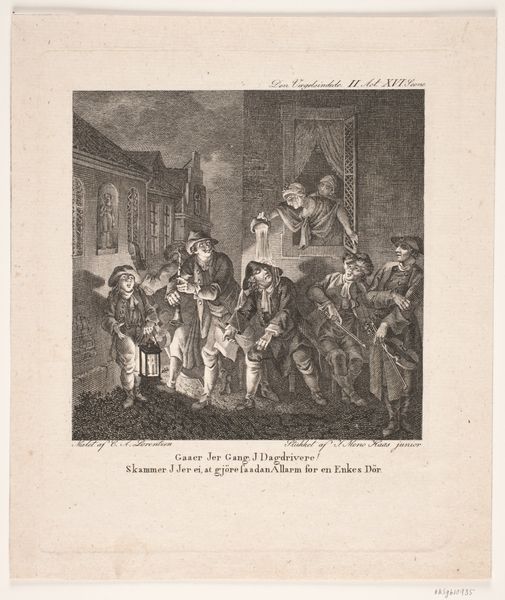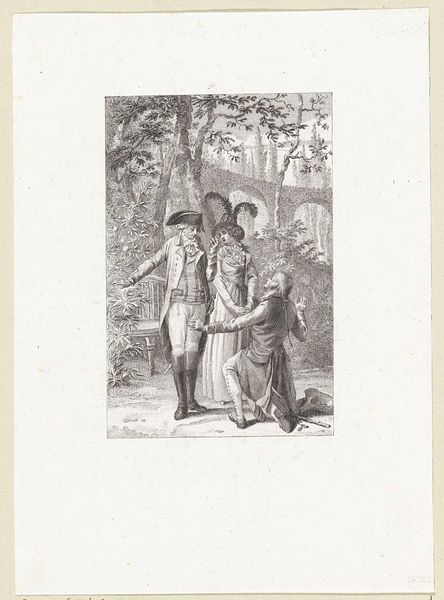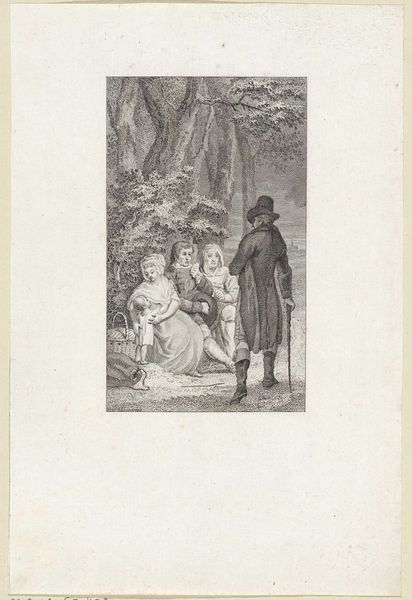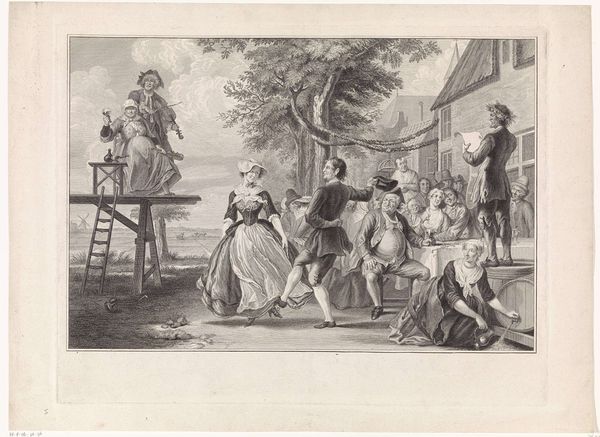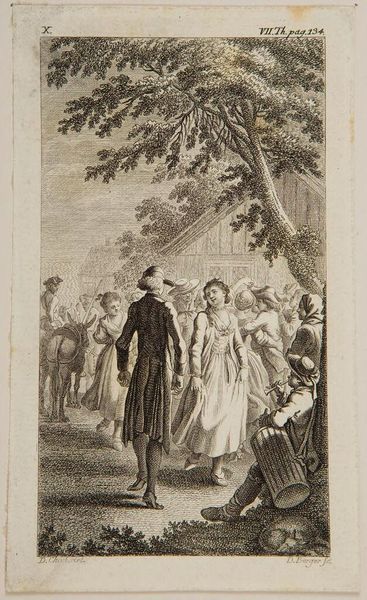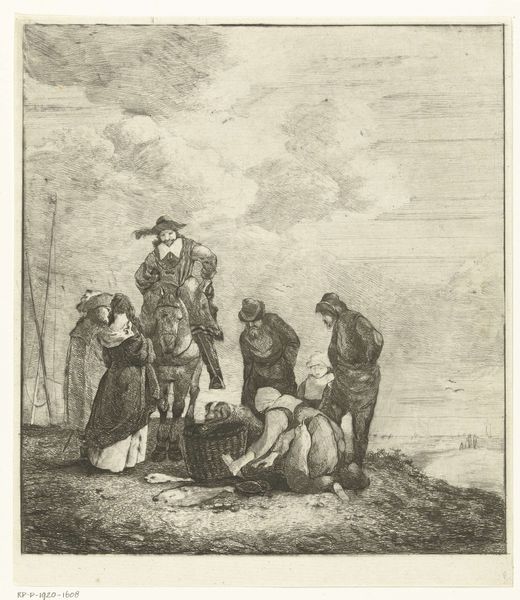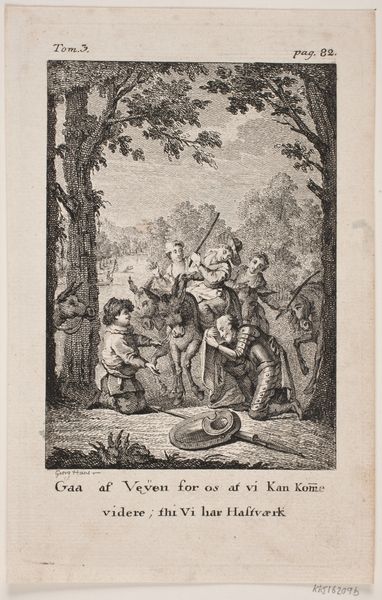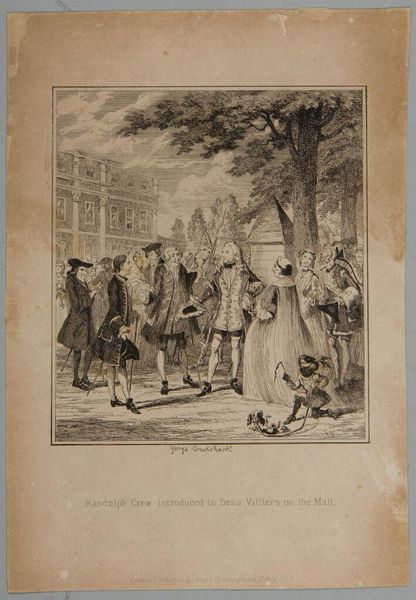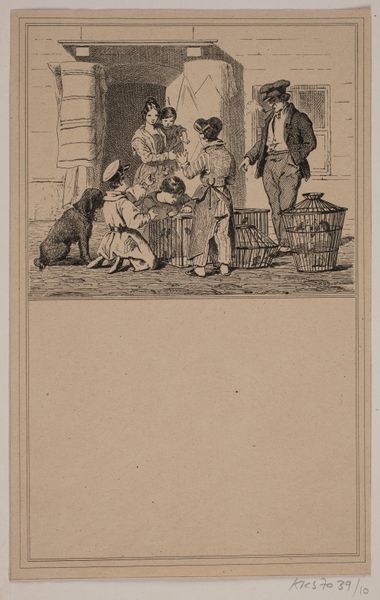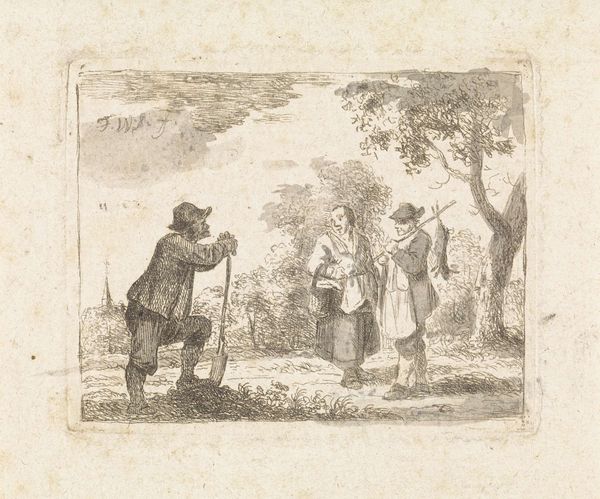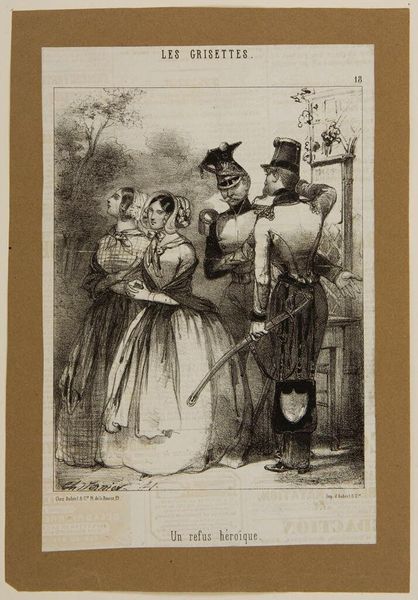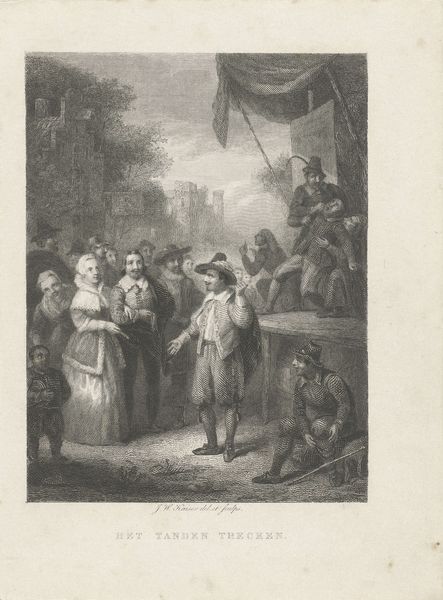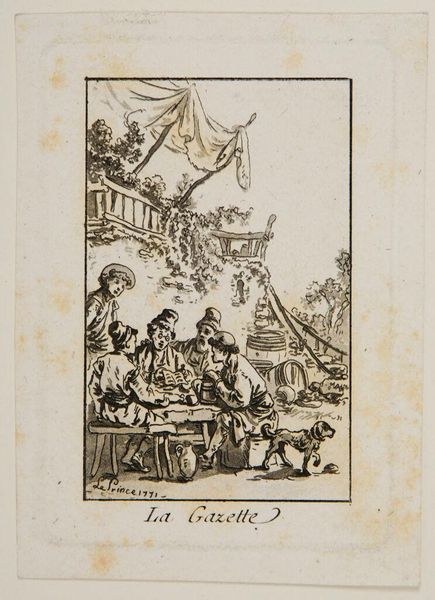
Dimensions: height 150 mm, width 97 mm
Copyright: Rijks Museum: Open Domain
Curator: Editor: So, here we have "De heer van Grootheim geeft geld aan de armen," made sometime between 1760 and 1817 by Cornelis Bogerts. It's an engraving, and it's quite detailed, showing a well-dressed man giving money to a poor family. What strikes me is the contrast – the opulence versus the evident poverty. How do you read the piece, focusing on the social context that generated it? Curator: Focusing on its materiality and context, consider what the engraving medium itself tells us. Engravings, being reproducible, democratized access to images and ideas. How does that understanding shape your view of this artwork’s potential influence on, say, ideas of wealth, poverty, and charity during the period it was made? Editor: That’s an interesting point! So, the engraving allowed for mass consumption of this image. Does this mass consumption suggest that these displays of charity were simply performative and didactic, intended more for those viewing the print rather than substantially changing material reality for those depicted? Curator: Exactly! It makes one consider who the target audience of such a print would have been. Were these inexpensive enough for the struggling to buy, or were they luxury items intended for the wealthy that would have served as morality reminders, or self-congratulatory objects? It's an object deeply enmeshed in the production of social meaning. Do you see hints of that encoded within the artwork’s production? Editor: I see what you mean. Knowing that the material itself played a role in distributing the artist’s views shifts my perception. It is less a neutral portrayal and more of a social commentary aimed at consumption. Curator: Indeed, considering the materiality allows us to move beyond simple notions of representation and into an analysis of power, labor, and ideology. It reveals much about how meaning is constructed, circulated, and ultimately, consumed. Editor: I never really thought about prints in that light. Thanks, that perspective has completely changed my understanding of this work.
Comments
No comments
Be the first to comment and join the conversation on the ultimate creative platform.
